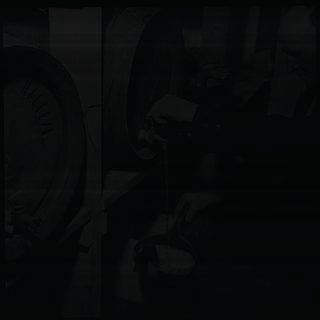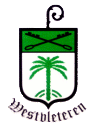Adnams is a regional brewery founded in 1872 in Southwold, Suffolk, England, by George and Ernest Adnams. It produces cask ale and bottled beers. Annual production is around 85,000 barrels.

Trappist beer is brewed by Trappist monks. Thirteen Trappist monasteries—six in Belgium, two in the Netherlands, and one each in Austria, Italy, England, France, and Spain— produce beer, but the Authentic Trappist Product label is assigned by the International Trappist Association (ITA) to just ten breweries which meet their strict criteria. As of 2021, Achel is no longer recognized as a Trappist brewery because it does not have any monks.

The New Glarus Brewing Company is an American brewery founded in 1993. Located in New Glarus, Wisconsin, it is an independently owned craft brewery, whose products can only be found in Wisconsin. New Glarus Brewing Company is the 15th largest craft brewer and 25th largest overall brewing company in the United States, by sales volume.

Chimay Brewery is a brewery at Scourmont Abbey, a Trappist monastery in Chimay, Hainaut, Belgium, one of the thirteen breweries worldwide that produce Trappist beer. They make four ales: Chimay Rouge, Chimay Bleue, Chimay Blanche, and Chimay 150; and one patersbier for the monks. The monastery also makes four varieties of cheese.

Orval Brewery is a Trappist brewery within the walls of the Abbaye Notre-Dame d'Orval in the Gaume region of Belgium.

Achel Brewery or Brouwerij der Sint-Benedictusabdij de Achelse Kluis was a Belgian Trappist brewery, until January 2021. It continues to operate as a brewery but is no longer Trappist, as the brewing monks whose presence gave rise to that status have retired. It is located in the Abbey of Saint Benedict in the Belgian municipality of Hamont-Achel. It brews six "Trappist beers".

Rochefort Brewery is a Belgian brewery which produces four beers designated as Trappist beers. The brewery is associated with the Rochefort Abbey, a Trappist monastery which originated in the 13th century. The current brewery dates from 1899.

Westmalle Brewery is a Trappist brewery in the Westmalle Abbey, Belgium. It produces three beers, designated as Trappist beer by the International Trappist Association. Westmalle Tripel is credited with being the first golden strong pale ale to use the term Tripel.

Beer in Belgium includes pale ales, lambics, Flemish red ales, sour brown ales, strong ales and stouts. In 2018, there were 304 breweries in Belgium, including international companies, such as AB InBev, and traditional breweries, such as Trappist monasteries. On average, Belgians drink 68 litres of beer each year, down from around 200 each year in 1900. Most beers are bought or served in bottles, rather than cans, and almost every beer has its own branded, sometimes uniquely shaped, glass. In 2016, UNESCO inscribed Belgian beer culture on their list of the intangible cultural heritage of humanity.

Beer in Norway has a long history, stretching back more than a millennium. Until some 200 years ago, most farms where it was possible to grow grain south of the Arctic Circle, brewed their own beer. From the early 20th century brewing was industrialized and home brewing was restricted. Significant consolidation in the brewing sector reduced the number of major breweries to just a handful. With the exception of the farmhouse ales, most beer styles brewed in Norway trace their ancestry to central Europe.

De Koningshoeven Brewery (Brouwerij de Koningshoeven) is a Dutch Trappist brewery founded in 1884 within the walls of Koningshoeven Abbey in Berkel-Enschot (near Tilburg).

St. Joseph's Abbey is a Trappist monastery in Spencer, Massachusetts. Jams and beer produced by the monks are particularly popular. The monastery is also known as one of the origins of the centering prayer movement in the 1970s. Certain parts of the abbey are generally open to the public.

Westvleteren is a village in the province of West Flanders, Belgium. It is a section of the municipality of Vleteren. The core of it is a linear settlement along the N321 road.
Westmalle Abbey, otherwise the Trappist Abbey of Westmalle, is a monastery of the Cistercians of Strict Observance in Westmalle in the Belgian province of Antwerp.

St. Bernardus is a brewery in Watou, Belgium.

Alvinne is a small brewery in the hamlet of Moen near the Belgian city of Zwevegem, founded in 2002.

St. Sixtus' Abbey, Westvleteren, which belongs to the Cistercians of Strict Observance, or Trappists, is a Roman Catholic abbey located in Westvleteren, in the Belgian Province of West Flanders. The abbey is famous for its spiritual life, characterised by prayer, reading, and manual work, the three basic elements of Trappist life. It has also a reputation for its brewery, one of several producers of Trappist beer in Belgium.

De Struise Brouwers is a microbrewery located in Oostvleteren, Belgium.

Most beer sold in France is pilsner lager, mass-produced by major breweries which control over 90% of the market, although there are also traditional beer styles, such as top-fermented Bière de Garde, and a number of microbreweries.

The Abbey Brewing Company is an American craft brewing company located in the Chama River Wilderness Area near Abiquiú, New Mexico. The microbrewery was founded in 2003 as a Benedictine joint venture of Our Lady of Guadalupe Monastery in Pecos, New Mexico and the Monastery of Christ in the Desert in Abiquiú. It is the first American monastery brewery founded before the Prohibition Era. The brewery's motto is "Made with care and prayer".





















